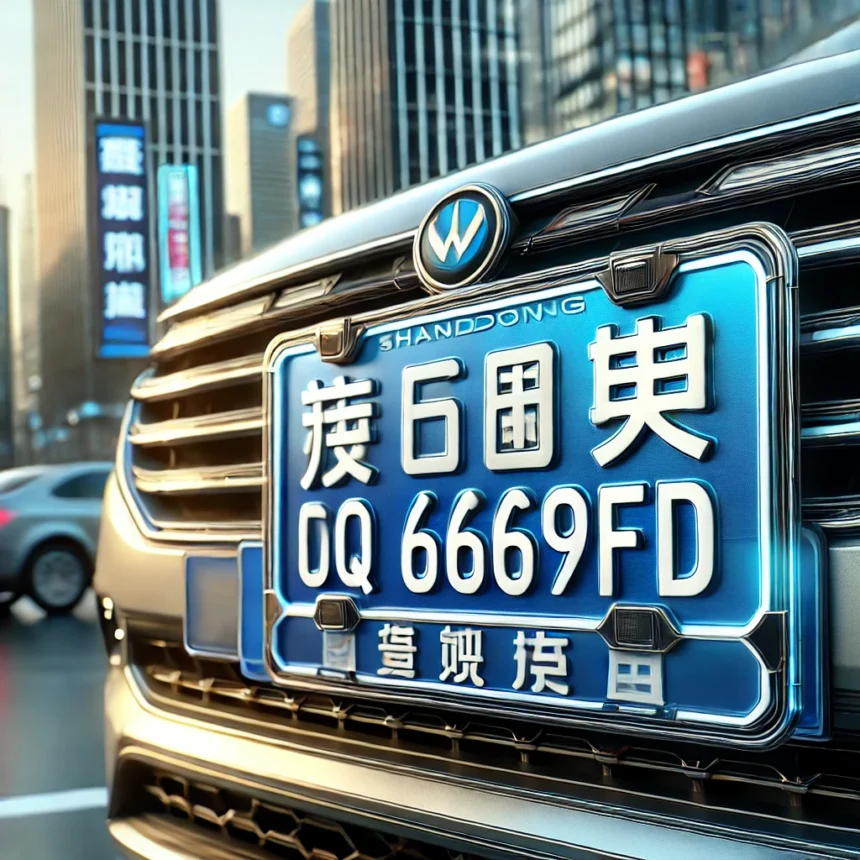representing Shandong Province. In China, license plates follow a standardized format that includes a provincial identifier, a city or regional code, and a unique alphanumeric sequence. These plates serve as essential identification tools for vehicles, ensuring road safety, legal compliance, and traffic management.
Decoding “鲁Q 669FD”
1. What Does “鲁” Mean?
The first character “鲁” (Lǔ) refers to Shandong Province, an eastern coastal province of China. This character is derived from the historical name of the region, which was once the State of Lu, home to the famous philosopher Confucius. Every vehicle registered in Shandong will have “鲁” as the first character on its license plate.
2. The Significance of “Q” in the License Plate
The letter following “鲁” designates a specific city or administrative region within Shandong Province. Different cities in the province are assigned different letters to distinguish them. For example:
- “鲁A” represents Jinan, the provincial capital.
- “鲁B” is for Qingdao, a major port city.
- “鲁Q” corresponds to a specific region, though the exact location would require referencing the latest registration data.
3. Understanding “669FD”
The final part, “669FD,” is a unique alphanumeric combination assigned to the vehicle. This sequence ensures that no two registered vehicles in the same region have identical license plates. The combination of numbers and letters allows for a vast number of unique plate assignments.
The Role of License Plates in China
1. Vehicle Identification and Registration
License plates help authorities track vehicle ownership and history. They are linked to the owner’s personal information, making it easier for law enforcement to address traffic violations, theft, and other legal matters.
2. Traffic Management and Law Enforcement
Chinese authorities use license plates to enforce traffic laws. Automated cameras and law enforcement officers rely on these plates to issue fines for speeding, illegal parking, and running red lights. In some cities, license plate-based restrictions help control congestion, limiting vehicle use on specific days.
3. Environmental Policies and Special Plates
China has introduced special green plates for electric vehicles (EVs) to promote sustainable transportation. These plates differ from traditional blue plates and allow EV owners to access benefits such as reduced tolls, preferential parking, and exemption from certain driving restrictions.
Frequently Asked Questions About “鲁Q 669FD”
1. Can a License Plate Be Transferred to Another Car?
In China, license plates generally remain with the vehicle owner rather than the car itself. When selling a car, the owner can often keep their plate for a new vehicle, provided they meet the regulatory requirements.
2. What Should You Do If a License Plate Is Lost or Damaged?
If a plate is lost, stolen, or damaged, the owner must report it to the local vehicle registration authority and apply for a replacement. Driving without a proper plate can result in fines and other penalties.
3. Are There Restrictions on License Plates in Certain Cities?
Yes, major cities like Beijing and Shanghai implement license plate lotteries and auctions due to high demand. Some cities also enforce traffic control measures based on the last digit of the plate number to reduce congestion and pollution.
Read also: http://Zomhom.co.uk
Conclusion
“鲁Q 669FD” is a unique license plate registered in Shandong Province, China. Its structure follows a standardized format that helps authorities identify and regulate vehicles. Understanding the meaning behind license plates can provide insights into regional registration systems, law enforcement practices, and even environmental policies in China. Whether you’re a vehicle owner, a traveler, or simply curious about license plates, knowing how they work can be valuable information.






